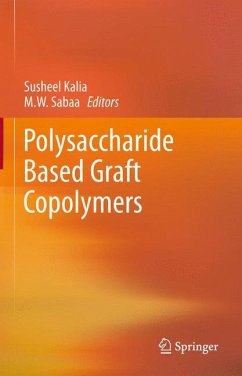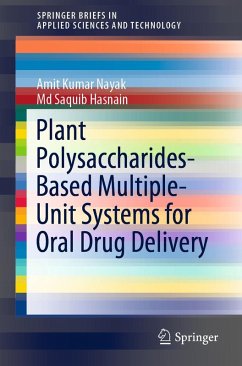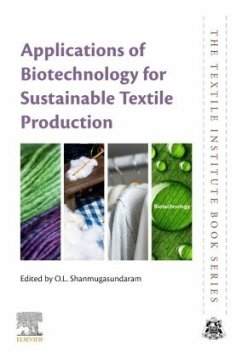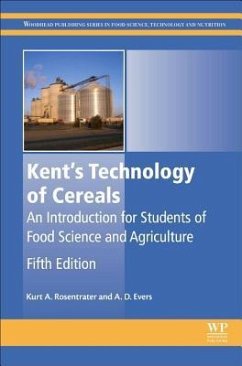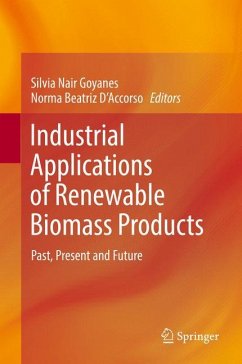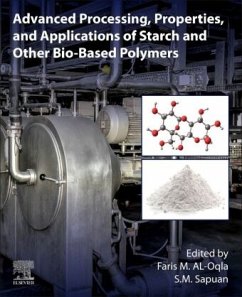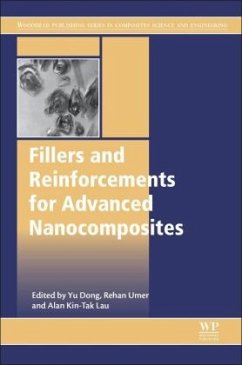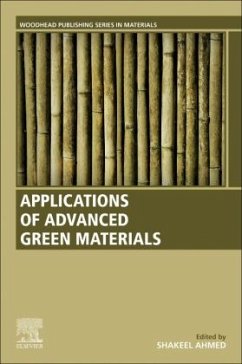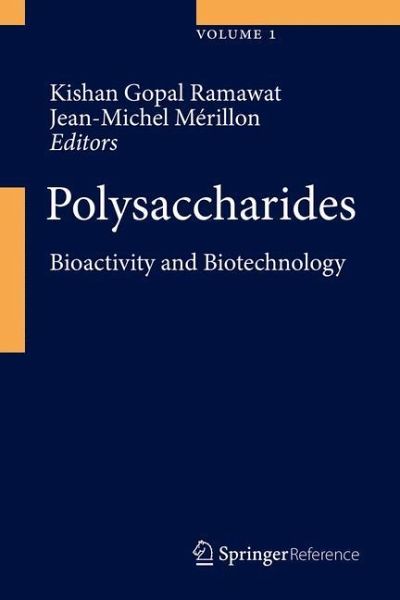
Polysaccharides
Bioactivity and Biotechnology
Herausgegeben: Ramawat, Kishan Gopal; Mérillon, Jean-Michel
Versandkostenfrei!
Versandfertig in 1-2 Wochen
383,99 €
inkl. MwSt.

PAYBACK Punkte
192 °P sammeln!
This authoritative reference work presents comprehensive information about one of the most important and most wide-spread classes of (bio)organic compounds: the polysaccharides. The comprehensive and thoroughly up-to-date handbook presents the sources, identification, analysis, biosynthesis, biotechnology and applications of important polysaccharides likes starches, cellulose, chitin, gum and microbial polysaccharides. Polysaccharides can exhibit complex structure and various functional activities. These bio macromolecules can therefore serve as raw materials for various different materials, e...
This authoritative reference work presents comprehensive information about one of the most important and most wide-spread classes of (bio)organic compounds: the polysaccharides. The comprehensive and thoroughly up-to-date handbook presents the sources, identification, analysis, biosynthesis, biotechnology and applications of important polysaccharides likes starches, cellulose, chitin, gum and microbial polysaccharides. Polysaccharides can exhibit complex structure and various functional activities. These bio macromolecules can therefore serve as raw materials for various different materials, e.g. rayon, cellulose acetate, celluloid and nitrocellulose; and they find multiple applications, for instance as surgical threads (chitin), as sources of energy, dietary fibers, as blood flow adjuvants, in cosmetics, emulsion stabilizers, film formers, binders, viscosity increasing agents or skin conditioning agenta, as food additives in gums, chewing gum bases and as vaccines. Polysaccharides form the basis for useful products, like xanthan gum, dextran, welan gum, gellan gum, diutan gum and pullulan. Some of the polysaccharide-derived products have interesting and useful properties and show biological activities, such as immunomodulatory, antibacterial, anti-mutagenic, radioprotective, anti-oxidative, anti-ulcer, antidepressant, anti-septicaemic or anti-inflammatory activities. All these applications and properties of polysaccharides are for the first time compiled in a thorough and comprehensive overview in the present work. This reference work is organized thematically in four parts: Part I. Polysaccharides: Occurrence, Structure, Distribution and Biotechnology. Part II. Methods. Part III. Bioactive Polysaccharides. Part IV. Polysaccharides as Food. This reference work is edited by experienced experts, all chapters are written by well recognized international specialists. It is useful to all those working in the field of botany, phytochemistry, pharmacy, drug delivery, molecular biology, metabolomics, forestry, environment, conservation, biotechnology and NGOs working for forest protection.



